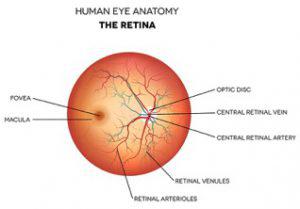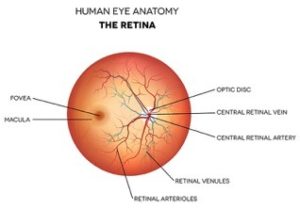
What is Retinal Diseases?
Retinal diseases differ extensively and, for the most part, trigger visual symptoms. Retinal diseases can impact a small layer of tissue on the inner back. The retina includes millions of light sensitive cells as well as other nerve cells that obtain visual information and arrange it. This data is transmitted to the brain via the optic nerve so that you can see. Treatment objectives may be to prevent or slow the disease and maintain, enhance or re-establish the sight, depending on the situation.
Types of Retinal Diseases:
- Retinal Tear – A tear of the retina happens when the transparent gel-like material at the middle of the eye shrinks and tugs on the slim layer of tissue that lined the eye’s back with sufficient traction to trigger tissue breakage.
- Retinal Detachment – The presence of fluid under the retina is a retinal detachment. It generally takes place when fluid moves via a tear of the retinal tissue and causes the retinal tissue to rise back.
- Diabetic Retinopathy – With the diabetes, the small blood vessels behind the eye may worsen and leak fluid into and under the retina. This swells the retina that could blur the vision or distort the vision. New abnormal capillaries that split and bleed can be developed. The sight also gets worse.
- Epiretinal Membrane – A tissue-like sensitive scar, or membrane, that feels like crinkled cellophane on the retina. This membrane rises on the retina, deforming the sight. Objects may look blurred or twisted.
- Macular Hole – A macular hole in the middle and back of the eye is a tiny defect. This can be caused by abnormal traction between the retina and the vitreous, or by an eye injury.
- Macular Degeneration – The center of the retina starts to deteriorate during macular degeneration. There are two kinds of degeneration – wet macular degeneration and dry degeneration. Many individuals first get a dry form that in one or both eyes progresses to the wet form.
What are the common symptoms of Retinal Diseases?
- Defects in the side vision
- Seeing floating specks
- Blurred or distorted vision
- Lost vision
Evaluations for Retinal Diseases
- Ultrasound
- CT scan
- MRI
- Fluorescein angiography
- Optical coherence tomography
- Indocyanine green angiography
Treatment for Retinal Diseases
Treatment of retinal disease options:
- Laser Surgery – A laser procedure can be done to fix the tear or the hole of the retinal tear. The surgeon is heating tiny pinpoints on the retina with a laser. It produces scarring conditions that often bind the retina to the underlying tissue. The immediate laser treatment for a new retinal tear may reduce the probability of a retinal detachment.
- Shrinking Abnormal Blood Vessels – A scatter laser photocoagulation method may be used by the doctor to reduce abnormal new blood vessels which grow or threaten to bleed in the eye. This procedure can assist diabetic retinopathy patients.
- Freezing – The surgeon will apply a freezing probe to the outer wall of the eye to cure a retinal tear, called a cryopexy. The intense cold extends into the eye, freezing the retina. The area being treated scars and secures the retina to the wall of the eye.
- Injecting Air or Gas Into Eye – It is used to cure certain kinds of retinal detachment, which is known as retinopexy pneumatic. This may be used together with cryopexy or laser photocoagulation.
- Indenting the Surface of Eye – This procedure is used to fix a retinal detachment, called scleral buckling. The surgeon is sewing the outside eye layer with a tiny piece of silicon. This lowers the sclera and alleviates a few of the force of tugging on the retina.
- Evacuating and Replacing the Fluid in the Eye – The doctor extracts the gel-like fluid that enters the inside of the eye during this procedure, called vitrectomy. The doctor injects into space air, gas and liquid. Vitrectomy may occur if the vitreous blood or inflammation clouds and block the retinal view of the surgeon.
- Injecting Medicine into the Eye – The doctor may recommend injecting medicines into the vitreous in the eye.
- Implanting a Retinal Prosthesis – Individuals who have serious vision loss or blindness due to retinal disease can be surgery candidates. One alternative is known as retinal prothesis which is not commonly accessible.













